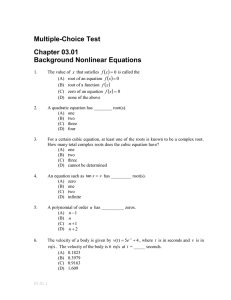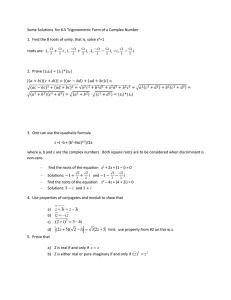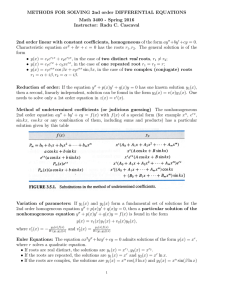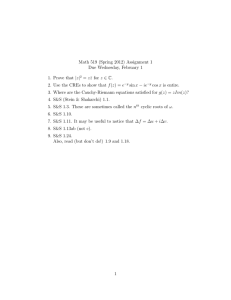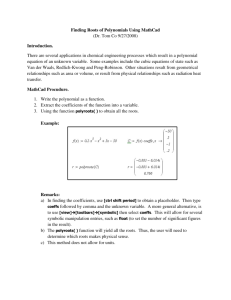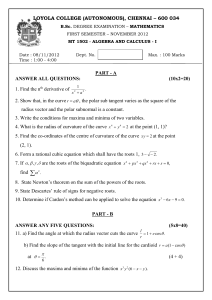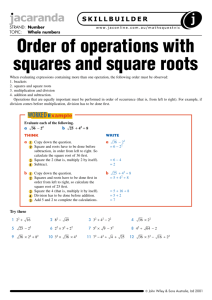Cubic Equation Roots: Mathematical Derivation
advertisement
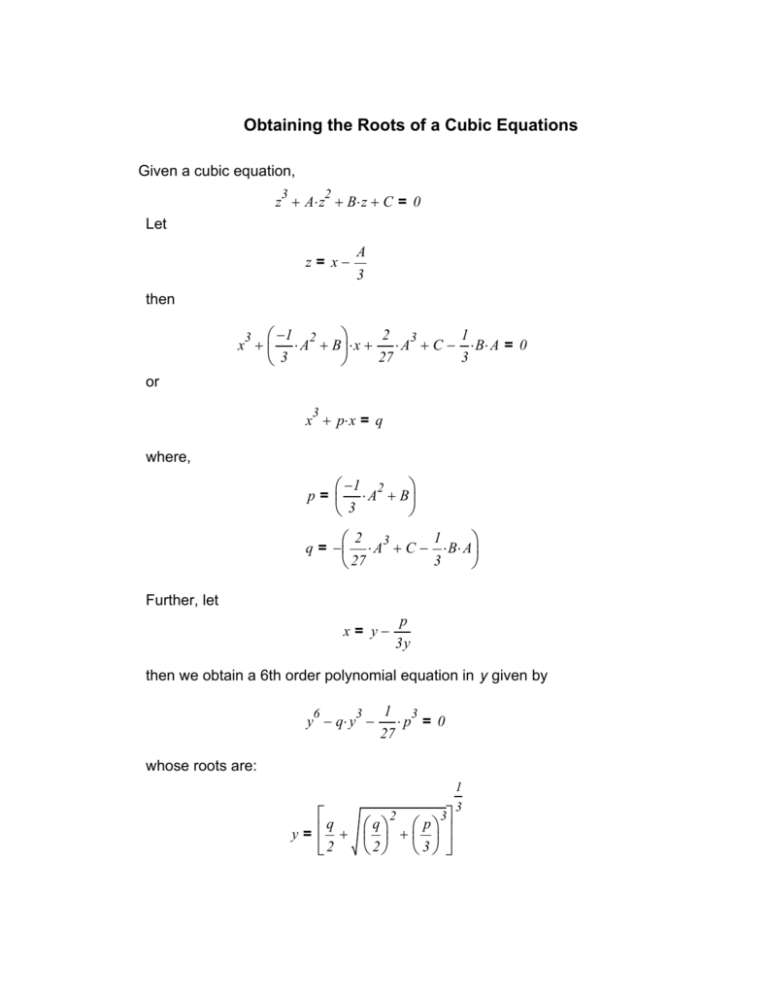
Obtaining the Roots of a Cubic Equations Given a cubic equation, 3 2 z + A⋅ z + B⋅ z + C = 0 Let z= x− A 3 then −1 2 2 3 1 ⋅ A + B ⋅ x + ⋅ A + C − ⋅ B⋅ A = 0 27 3 3 x + 3 or 3 x + p⋅ x = q where, −1 2 ⋅ A + B 3 p = 2 3 1 q = − ⋅ A + C − ⋅ B⋅ A 3 27 Further, let x= y− p 3y then we obtain a 6th order polynomial equation in y given by 6 3 y − q⋅ y − 1 27 3 ⋅p = 0 whose roots are: 1 2 3 q q p y= + + 2 2 3 3 Now let the discriminant ∆ be the term inside the square root above, i.e. 2 q P ∆ = + 2 3 3 then we will have two cases that will depend on whether the discriminant is positive or negative. ∆ > 0 Then we will have one real root and a complex conjugate pair Case 1: The first root is given by z1 = sign ( h) ⋅ ( h ) 1 3 − A 3 where, h= q 2 + ∆ The other roots can then be obtained by using the values of the first root: z2 = z3 = Case 2: ( ) − A + z1 + ( A + z1) 2 − 4⋅ B + z1⋅ ( A + z1) 2 ( ) − A + z1 − ∆< 0 ( A + z1) 2 − 4⋅ B + z1⋅ ( A + z1) 2 There will be three real roots. The first root will be obained as follows (whose proof is given below): −∆ atan q − p A 2 − z1 = 2⋅ ⋅ cos 3 3 3 And the two remaining roots can be determined by the following equations: z2 = z3 = ( ) ( A + z1) 2 − 4⋅ B + z1⋅ ( A + z1) − A + z1 + 2 ( ) ( A + z1) 2 − 4⋅ B + z1⋅ ( A + z1) − A + z1 − 2 Proof for formula to obtain the first root: 2 Let q q p h = + i − − 2 2 3 3 whose magnitude and angle are given by −p h = 3 3 −∆ q 2 θ = arg ( h) = atan allowing one to evaluate the cube root of the polar representation: y= h 1 3 i⋅ θ −p 3 ⋅e 3 = from which we obtain i⋅ x= θ −p 3 ⋅e + 3 −p 3 i⋅ θ −p 3 ⋅e 3 x= ( ) − p i⋅ θ −p − i⋅ θ θ ⋅ e +e = 2⋅ ⋅ cos 3 3 3 or A −p θ A z1 = x − = 2⋅ ⋅ cos − 3 3 3 3
